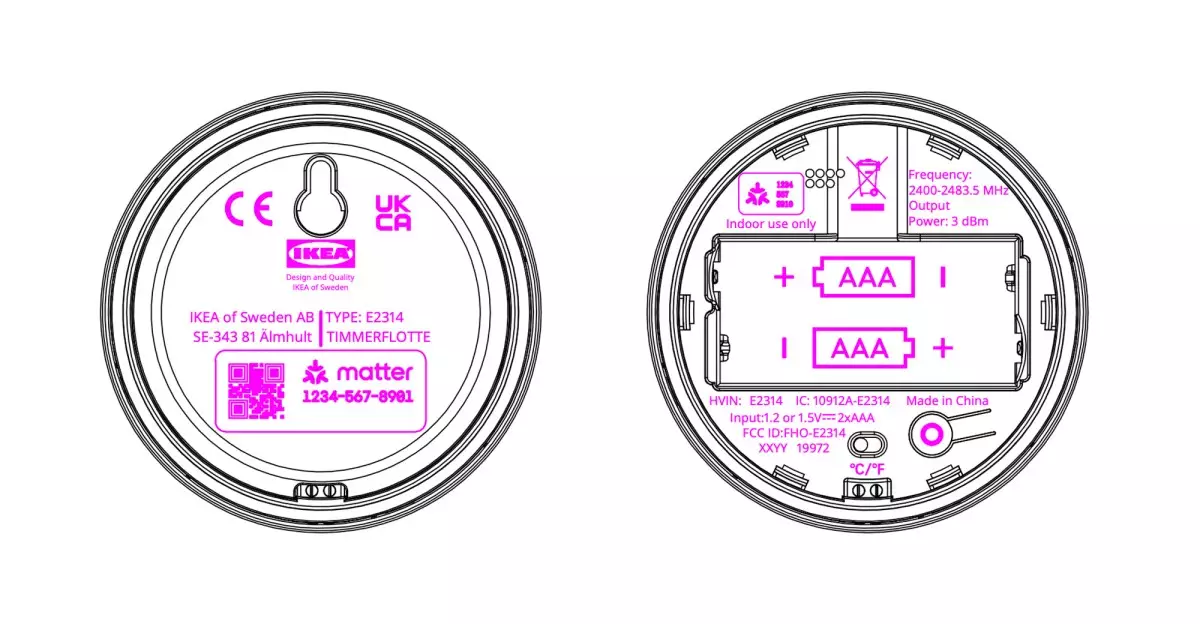Ikea, a brand synonymous with stylish yet affordable furniture, is venturing into new territory by registering its inaugural Thread device, the Timmerflotte. This latest innovation—a temperature and humidity sensor—is part of the ongoing evolution of smart home technology, enhancing how consumers interact with their living spaces. With the addition of the Timmerflotte, Ikea is hinting at a more integrated approach to home automation that embraces the Matter protocol, a standard designed to foster interoperability among devices from different manufacturers.
According to reports, the Timmerflotte is a circular device powered by two AAA batteries, complete with a unique QR code and an 11-digit number to facilitate Matter setup. What sets it apart from previous offerings is its exclusive reliance on the Thread protocol, positioning it dynamically within the broader smart home ecosystem. Unlike many of its existing devices that utilize Zigbee or Wi-Fi, the Timmerflotte’s singular focus on Thread indicates a strategic shift at Ikea, aiming to streamline connectivity and enhance user experience.
This focus on Thread brings the added benefits of low power consumption and efficient communication among other smart devices, aligning perfectly with the concept of a smart home. The simplicity of the device’s setup process, including the QR code system, can encourage less tech-savvy customers to adopt smart technology without overwhelming them with complexity.
Interestingly, the move to support Thread and Matter raises questions about Ikea’s current smart home ecosystem, particularly regarding its Dirigera hub. While the Dirigera was initially marketed with potential Thread capabilities, it did not launch with this feature. As it stands, the Dirigera acts as a bridge rather than a controller, limiting its ability to integrate seamlessly with Matter devices.
However, the introduction of the Timmerflotte might hint at future updates for the Dirigera hub. If Ikea manages to activate Thread support and the Matter controller functionality, it could revolutionize how their devices interact with each other. Such updates would enable the Dirigera to function as a full-fledged smart home hub, paralleling other advanced systems like the Aqara M3 hub. This evolution could position Ikea as a serious contender in the smart home market, appealing to consumers seeking cohesive automation solutions.
As Ikea navigates this new direction, the Timmerflotte represents a critical step toward a more interconnected and efficient home automation landscape. By adopting Matter and Thread, Ikea not only modernizes its offerings but potentially reshapes consumer expectations regarding smart home technology.
If successful, Ikea could establish itself as a front-runner in creating user-friendly, integrated smart home solutions that cater to a broad audience. The Timmerflotte is a promising start, and as Ikea continues to innovate and expand its product range, the future of smart living might just see the brand leading the charge toward a more seamless and enjoyable technological experience in our homes.

